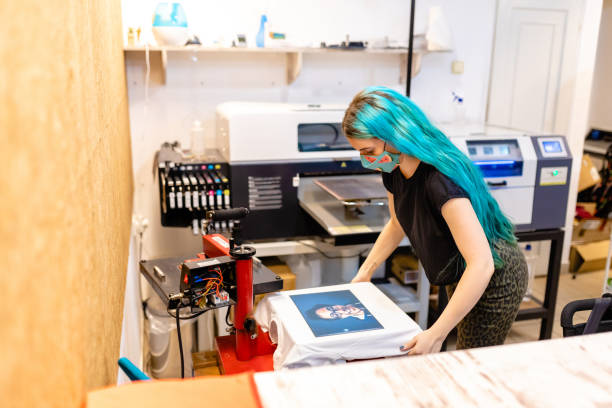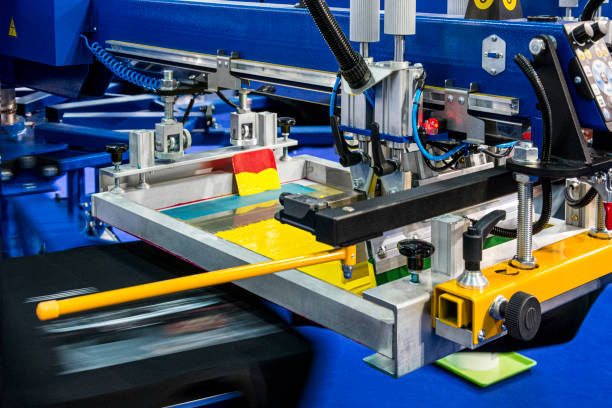Have you ever dreamed of seeing people wearing your designs on the street, or building a fashion brand that becomes a household name? You’re not alone. With creativity, vision, and the right guidance, many aspiring entrepreneurs are diving into the fashion world. But before the fame, followers, or sales come rolling in, it’s crucial to understand how to start a clothing brand business from the ground up.
Whether your passion lies in streetwear, sustainable fashion, or luxury style, this guide is designed to walk you through each step of the journey
So, where do you even begin? How much money does it take to start? Do you need design skills or manufacturing connections? How do you stand out in such a competitive industry? These are some key questions we’ll explore in this complete beginner’s guide to launching your fashion line. We’ll cover everything from finding your niche and building a brand identity to launching your first collection and scaling your business.

What is the Clothing Brand Business
A clothing brand business in Nigeria means creating and selling clothes under your name, style, or identity. It’s more than just sewing—it’s about building a fashion label that people can recognize, trust, and love to wear.
In Nigeria, this business blends creativity, culture, and hustle. It could be streetwear with bold graphics, native wear with a modern twist, or even everyday outfits with your personal touch. Whether you’re selling online, in your neighborhood, or at fashion events, you’re not just selling clothes, you’re selling a lifestyle, a story, and a name people can connect with.
Reasons Why You Should Consider a Cloth Branding Business
1. Growing Demand for Personalized Products: People increasingly desire unique and customized items that reflect their style, personality, or beliefs. Custom-branded clothing, such as t-shirts, hoodies, and hats, is popular for personal expression, team uniforms, events, and marketing purposes.
2. Low Startup Costs: Starting a clothing branding business can be relatively inexpensive compared to other ventures. With access to printing technology like screen printing, heat transfer, or direct-to-garment (DTG) printing, you can begin with minimal investment and expand as demand grows.
3. Creative Freedom: If you have a passion for design, clothing branding offers an opportunity to showcase your creativity. You can work with various designs, logos, and artwork, which keeps the process exciting and fresh.
4. Diverse Market Opportunities: The demand for branded apparel spans various industries, from fashion to corporate, sports, education, and events. Whether it’s for local businesses, schools, influencers, or online shops, there are multiple avenues to explore.
5. Repeat Business Potential: Once you’ve established a brand or customer base, you can benefit from repeat business. Customers may return for more products or recommend your services to others, increasing your revenue streams.
7. Scalability: This business can grow with demand. As your customer base expands, you can scale up operations, offer more product variety, and even explore online selling platforms for a wider reach.
8. Social Media and Influencer Marketing: The rise of social media influencers creates a huge opportunity for clothing branding. Partnering with influencers or creating branded merchandise tied to viral trends can increase brand visibility and sales.
Related Posts:
How to Start a Successful Catering Business
How to Start a Successful Food Truck Business
35 Low-cost Offline Business Ideas in Nigeria 2025
How to Start a Small-scale Poultry Business

How to Start a Clothing Brand Business
1. Define Your Brand Vision & Identity
Before you design anything, get crystal clear on your brand vision. Ask yourself: what kind of clothing do I want to create, and who is it for? Your niche could be anything: streetwear, formalwear, kids’ fashion, activewear, or eco-friendly basics. Picking a niche helps you stand out and build a loyal audience.
Next, think about your brand’s personality. Are you bold and edgy or minimal and chic? Your story and values matter just as much as your clothes. Maybe your brand stands for body positivity, sustainability, or cultural expression. Whatever it is, just ensure your mission and messaging are strong and authentic to your customers.
Finally, define your aesthetic. This includes your color palette, vibe, and the “feel” of your brand. Your unique selling proposition (USP) is what makes your brand different from others in the same space. Is it your handmade process? Your limited-edition drops? Your storytelling? Own it.
2. Conduct Market Research
Once your vision is clear, it’s time to dig into the market. Who is your ideal customer? Are they teens who love trendy outfits or professionals looking for stylish, eco-friendly office wear? Know their buying habits, favorite platforms, and price expectations.
Study your competitors too. What are they doing well? Where do they fall short? Look at their pricing, product types, customer reviews, and branding. This can show you what the market wants, and what it still needs.
Validate your idea by testing it out. Share designs on social media, run polls or launch a survey. You could even open up pre-orders to gauge interest. Getting feedback early saves time, money, and mistakes later.
3. Develop a Solid Business Plan
Every great business needs a game plan. A business plan helps you stay organized and secure funding if needed. Start with a short executive summary explaining your brand and mission.
Detail your product offering, what types of clothing you will sell, and why. Decide if you’ll sell direct-to-consumer (DTC) via your website, wholesale to stores, or use print-on-demand/dropshipping. Each model has pros and cons, so choose what fits your budget and goals.
Include a financial plan too. Figure out your costs (design, production, marketing), how you’ll price your products, and when you expect to break even. This is key for long-term success.

4. Design Your First Clothing Collection
Now comes the fun part, designing! Start with sketches or digital mood boards. What vibe do you want your collection to give off? Think about color schemes, cuts, and how pieces will look together.
Keep it simple for your first drop. T-shirts, hoodies, joggers, or even just one standout item is a great start. Focus on quality and fit. Make sure the designs reflect your brand identity and are wearable.
Functionality matters too. Will your clothes be comfy, durable, and seasonal? Balance fashion appeal with comfort and practicality.
5. Source Materials & Find Manufacturers
To bring your designs to life, you’ll need fabrics and production. Start by sourcing materials and choosing sustainable or high-quality fabrics that fit your brand values. Local suppliers may also offer more flexibility and easier communication.
Decide whether you’ll manufacture in-house or outsource. In-house gives you control, but third-party manufacturers can scale faster. Either way, always request samples before full production to check quality.
Visit factories if you can, or video-call them. Make sure they understand your expectations around fit, fabric, and finishing.
6. Create Your Brand Assets
Now, make your brand visually unforgettable. Start with a logo, brand fonts, and color palette that reflect your style. This will appear on your website, social media, and labels.
Don’t forget the packaging. Clothing tags, labels, and mailer boxes should all be consistent with your brand image. Thoughtful packaging can boost your brand’s perceived value.
Lastly, shoot professional photos of your collection. Whether it’s lifestyle shots, flat lays, or a lookbook, great visuals are essential for marketing and online sales.

7. Set Up Your Online Store & Sales Channels
Build your store on platforms like Shopify, Etsy, or Squarespace. Pick one that fits your needs and budget. Your site should be clean, easy to navigate, and mobile-friendly.
Set up secure payment methods, shipping options, and inventory tracking. Add tools for abandoned cart recovery, customer reviews, and email sign-ups.
You can also explore other sales channels, pop-up shops, local markets, retail partnerships, or marketplaces like ASOS Marketplace and Depop.
8. Register Your Clothing Business Legally
Before you start selling clothes, it’s important to make your business official. This protects your brand and helps you avoid problems in the future. Don’t worry, it’s not as hard as it sounds. Here’s what to do:
A. Choose a Business Structure
This just means deciding how your business will be run legally. Some common types are:
- Sole Proprietorship: This is the simplest option if you’re running the business alone.
- Limited Liability Company (LLC): Offers more protection and separates your money from your business assets.
B. Register Your Business Name
Pick a name that matches your brand (make sure no one else is using it).
- Register it with the right government office in your country or state.
- If you’re in Nigeria, you can register your business with the Corporate Affairs Commission (CAC) online.
- Apply for a Business License or Permit
- Some locations require you to get a license before you start selling.
- Check with your local government or visit their website to find out what you need.
C. Protect Your Brand
If you want to stop others from copying your brand name or logo, you can apply for a trademark.
- It’s not required, but it’s a smart step if you plan to grow your brand.
- Get a Tax ID (If Needed)
- Some countries ask you to get a tax number for your business.
- This helps you pay the right taxes and keep your business records clean.
Registering your business makes you look professional, builds trust with customers, and keeps you on the right side of the law.
9. Price Your Products for Profitability
Pricing isn’t just about covering costs. It needs to support growth while staying attractive to buyers. Start by calculating your cost of goods sold (COGS), which includes materials, labor, packaging, and shipping.
Add a healthy margin to cover marketing, returns, and overhead. Consider offering bundles, limited-time discounts, or exclusive drops to add perceived value and boost average order value.
Test your pricing strategy, but don’t undervalue your work. Customers are willing to pay for unique, quality fashion.

10. Launch Your Brand
Your launch is your first big impression; make it count! Build hype beforehand with teaser posts, behind-the-scenes clips, and influencer collaborations. A countdown or email list can build excitement.
You could do a soft launch with pre-orders or limited-edition drops to build urgency. Share your brand story openly and let your audience feel part of the journey.
Celebrate launch day with giveaways, launch events, or special discounts to create buzz.
11. Market & Promote Your Clothing Line
Marketing never stops! Start with a strong presence on Instagram, TikTok, and Pinterest, these platforms are gold for fashion brands. Share style tips, reels, customer photos, and sneak peeks of upcoming drops.
Team up with micro-influencers or fashion creators. You don’t need celebrities, relatable influencers can have a huge impact. Use ads smartly and retarget website visitors to bring them back.
Build an email list for loyal customers. Offer early access or exclusive content. Email marketing is underrated and super effective!
12. Track, Analyze & Optimize
You’ve launched, now what? Track your KPIs (key performance indicators): sales, traffic, conversion rates, and customer feedback. What’s working? What’s not?
Use tools like Google Analytics, Shopify reports, and customer surveys. This info helps you tweak your marketing, improve designs, and plan future collections.
Fashion moves fast, so stay flexible. Use what you learn to drop seasonal items, restock popular products, and keep evolving.
Beginner Mistakes to Avoid
- Even big brands started small and made mistakes. Here are a few to avoid:
- Don’t overcomplicate your first collection. Start small and grow gradually.
- Don’t ignore branding. Your story and identity matter as much as your clothes.
- Never skip testing samples before full production.
- Don’t price yourself too low, you won’t be able to grow or pay yourself.
Free Tools & Resources to Help
- Here are some handy tools for beginners:
- Design: Canva (easy mockups), Adobe Illustrator, CLO3D (3D fashion design)
- E-commerce: Shopify, Etsy, Squarespace
- Mockups: Placeit, Printful, Smartmockups
- Planning: LivePlan (business plan), Shopify profit calculators
Use these to save time, money, and sanity!

Real-Life Examples & Case Studies
Need inspiration? Look at brands like Gymshark, which started from a garage, or Supreme, which built hype through scarcity. Even smaller brands on TikTok have exploded thanks to a strong community and storytelling.
Check out interviews or YouTube case studies of small fashion startups; seeing real journeys can give you insights and motivation.
Clothing Brand Business Frequently Asked Questions and Answers
1. How much does it cost to start a clothing brand?
It can range from $500 to $5,000 or more, depending on your business model. Print-on-demand is more affordable upfront, while custom manufacturing and inventory can cost more. Always start with a clear budget and scale as you grow.
2. Can I start a clothing line with no experience?
Yes, 100%! Many successful clothing brand owners started with no fashion background. What matters most is your passion, willingness to learn, and your ability to take action. You can use tools, take online courses, and even hire freelancers to help with design or marketing.
3. What’s the best platform to sell clothing online?
Shopify is one of the most popular choices because it’s beginner-friendly and has tons of features. But Etsy works great for handmade or vintage-inspired items, and Squarespace is ideal for clean, beautiful websites. You can also sell through social platforms like Instagram and TikTok Shop.
4. How do I protect my clothing designs legally?
To protect your brand name and logo, register a trademark. For specific designs or patterns, you may be able to file for a copyright or design patent, but it’s best to speak with a legal professional. At the very least, keep records of your original work and use contracts with any partners or freelancers.
Conclusion
Starting a clothing brand business can feel overwhelming at first, but it doesn’t have to be. By following these clear, beginner-friendly steps, you’re already ahead of the business. Whether you’re sketching your first tee or launching a full collection, remember that every big brand starts with a small idea and a lot of heart.
Take your time, stay curious, and don’t let fear hold you back. If something feels confusing, break it down into smaller steps. Use free tools, ask questions, connect with other creators, and most importantly, just start. You’ll learn and improve as you go.
And one last piece of advice? Your brand is more than just clothes, it’s a message, a movement, and a reflection of your creativity. So go on, build something people will love to wear and remember.
If you found this guide helpful, please consider supporting us by subscribing to our newsletter, liking it, and sharing it with others.


